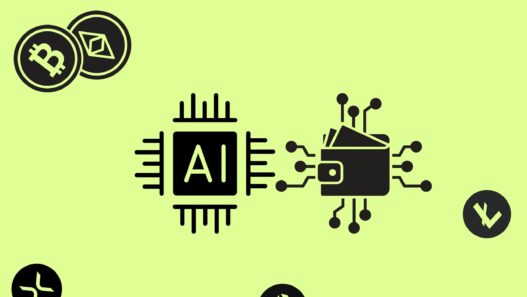Blockchain technology has revolutionized industries by enabling secure, transparent, and decentralized transactions. A consensus mechanism is a system used in blockchain networks to ensure all participants (nodes) agree on the validity of transactions and the state of the ledger. Since blockchains are decentralized and lack a central authority, they require a method to reach agreement and maintain security, integrity, and consistency across all copies of the ledger. Each consensus mechanism is designed to balance security, speed, energy efficiency, and decentralization, depending on the blockchain’s goals.
What kind of problems are these consensus mechanisms addressing?
1. Double-Spending Problem
In digital transactions, the same asset could be copied and spent twice without proper verification. Consensus mechanisms prevent this by ensuring that once a transaction is validated and added to the blockchain, it cannot be altered or duplicated.
Example: Bitcoin’s Proof of Work (PoW) prevents double-spending by making transaction verification computationally expensive.
2. Byzantine Fault Tolerance (BFT) – Handling Dishonest Nodes
Blockchain networks operate in decentralized environments where not all participants can be trusted. Consensus mechanisms help the network agree on the correct version of the ledger, even if some nodes act maliciously or send false information.
Example: Practical Byzantine Fault Tolerance (pBFT) ensures agreement among nodes, even if up to one-third are dishonest.
3. Decentralization Without a Central Authority
Traditional financial systems rely on central banks or institutions to verify transactions. Blockchain consensus mechanisms replace this central authority with a distributed system where participants collectively validate transactions.
Example: Proof of Stake (PoS) allows users to stake tokens and validate transactions, reducing reliance on centralized control.
4. Preventing Network Forks and Ensuring Consensus
Without proper agreement, blockchains could split into multiple conflicting versions (forks). Consensus mechanisms help maintain a single, unified ledger.
Example: Ethereum’s transition to PoS helped reduce unintended forks and improve stability.
5. Security Against Attacks (e.g., 51% Attack)
A 51% attack occurs when an entity controls the majority of a blockchain’s computing power or stakes, allowing them to manipulate transactions. Consensus mechanisms make such attacks extremely difficult or unprofitable.
Example: PoW requires massive computational power, making it nearly impossible for a single entity to control the network.
6. Scalability and Transaction Efficiency
Blockchains must balance security, decentralization, and speed. Consensus mechanisms optimize transaction processing while keeping the network secure.
Example: Delegated Proof of Stake (DPoS) speeds up transactions by allowing a small group of elected validators to confirm them.
7. Ensuring Trust in a Trustless System
Blockchain operates without the need for trust between parties. Consensus mechanisms ensure transactions are verified correctly, even when participants don’t know or trust each other.
Example: Federated Byzantine Agreement (FBA) in Stellar allows nodes to choose trusted peers, forming an overlapping web of consensus.
Type of Blockchain Consensus Mechanisms
Let’s try to get a bit clearer understanding of which consensus mechanisms address what type of problems:
1. Proof of Work (PoW) – The Original Consensus
- How It Works: Miners compete to solve complex mathematical puzzles, and the first to solve it adds the block to the chain.
- Used By: Bitcoin, Litecoin
- Pros: High security, battle-tested
- Cons: Energy-intensive, slow transactions
Think of it like a race where many competitors (miners) try to solve a puzzle. The first one to finish gets the prize (newly minted crypto).
2. Proof of Stake (PoS) – Energy-Efficient Alternative
- How It Works: Instead of solving puzzles, validators are chosen based on the number of tokens they “stake” (lock up).
- Used By: Ethereum 2.0, Cardano
- Pros: Energy-efficient, faster transactions
- Cons: Wealthier participants have more control
Imagine a lottery where your chances of winning increase with the number of tickets you buy. But instead of money, you’re using crypto coins.
3. Delegated Proof of Stake (DPoS) – Democracy in Blockchain
- How It Works: Users vote for a small group of trusted validators who verify transactions.
- Used By: EOS, TRON
- Pros: Fast and scalable
- Cons: Centralized power among a few validators
Think of it like a student council election where the class (users) votes for representatives (validators) to make decisions on their behalf.
4. Practical Byzantine Fault Tolerance (pBFT) – Trust Through Communication
- How It Works: Validators communicate to confirm transactions before reaching consensus.
- Used By: Hyperledger Fabric, Zilliqa
- Pros: Low energy usage, fast transactions
- Cons: High network traffic, limited scalability
Picture a team where members must agree on a decision by discussing it first before making a move.
5. Federated Byzantine Agreement (FBA) – Open Membership Model
- How It Works: Validators freely choose which other validators they trust, forming “quorum slices” that eventually overlap into a network-wide consensus.
- Used By: Stellar, Ripple (XRP)
- Pros: Open participation, high scalability
- Cons: Trust-based, potential for centralization
Imagine a friend group where each person decides who they trust, forming smaller circles that eventually merge into a larger trusted network.
6. Avalanche Consensus – A Unique Take on Voting
- How It Works: Nodes continuously sample small groups of validators and adjust their stance based on the majority.
- Used By: Avalanche
- Pros: Highly scalable, energy-efficient
- Cons: Still relatively new, requires widespread adoption
Think of it like a social trend—people see others wearing a new fashion, and as more adopt it, it eventually becomes the norm.
7. Tangle (Used in IOTA) – No Miners, Just Transactions
- How It Works: Each new transaction must verify two previous transactions, removing the need for miners.
- Used By: IOTA
- Pros: Scalable, low fees
- Cons: Currently requires a central “coordinator” for security
Picture a chain where every new link must connect and verify two previous links, creating a secure web of transactions.
Consensus mechanisms are the foundation of blockchain security, preventing fraud, ensuring decentralization, and keeping the network functional. Different blockchains use different mechanisms based on their specific needs—whether it’s security, speed, or scalability.






















